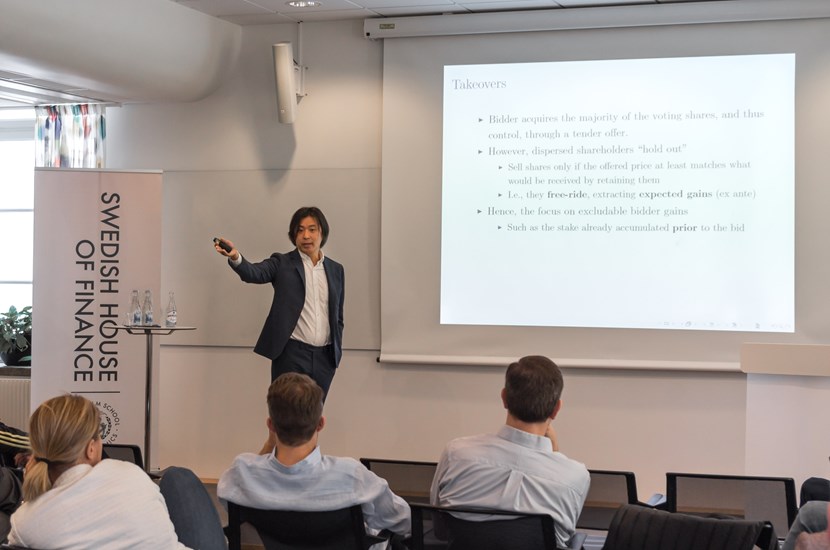Institutional Investors and Corporate Governance
Jul. 28, 2017
On 9 – 10 June, Swedish House of Finance hosted a conference on the theme “Institutional Investors and Corporate Governance”. The conference examined aspects such as activism, takeovers, competition, and liquidity.

Participating researchers had the opportunity to listen to presentations focusing on Common Ownership, Interactions amongst Blockholders, Competition for Flow, Influences on Institutional Investors, and How to Govern. Amil Dasgupta, co-organizer together with Mike Burkart, opened the conference with a thematic survey of the theoretical literature on the role of institutional investors in corporate governance, in the process outlining how the six theory papers in the conference fit into relevant strands of the literature.
Dasgupta highlighted that institutional ownership has increased dramatically over recent decades, from around 10% in the 1950s to around 70% in the early 2000s. He then went back to the origins of the literature on blockholder monitoring. In the “classic” corporate governance papers, monitoring is exercised through several channels, but there is no explicit distinction between institutions and individuals. In practice, until the mid-1980s, participants were principally individuals as opposed to institutions. That has changed in subsequent decades.
Dasgupta then highlighted two strands of the literature that directly responded to the increasing importance of institutional investors in corporate governance. The first strand consists of papers (e.g., Brav and Mathews 2011, Zachariadis and Olaru 2015) that highlight the role of sophisticated trading strategies by institutional investors in dynamically modifying the security voting structure of firms, fostering phenomena such as empty voting. A second, more recent, strand of the literature (e.g., Dasgupta and Piacentino 2015) explicitly models monitors (institutional investors) as agents rather than principals and thus focuses on multi-layered agency relationships in blockholder monitoring. Finally, he noted that an emerging strand of the literature has started to examine interactions amongst blockholders with differing agency problems. Dasgupta concluded his talk by emphasizing the potential benefits of modeling the effects of multi- layered agency problems in corporate governance.
